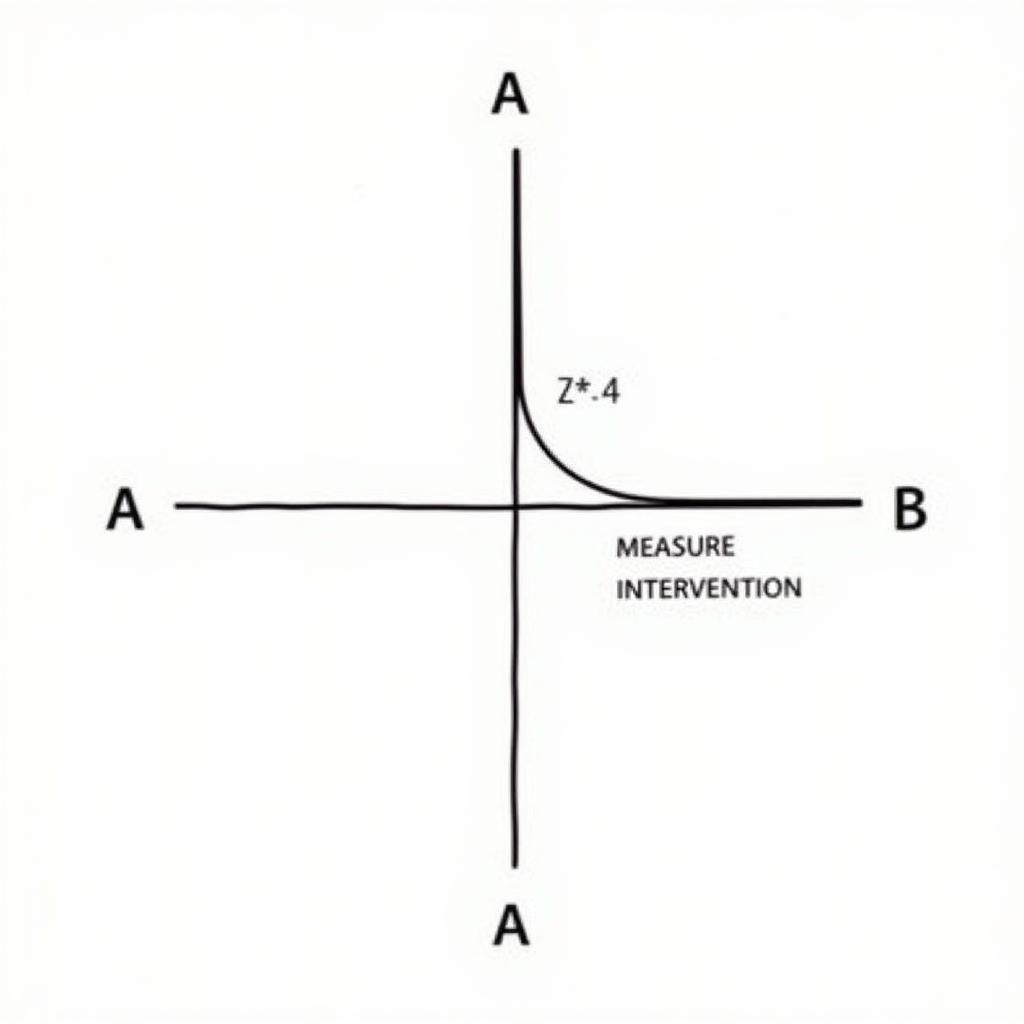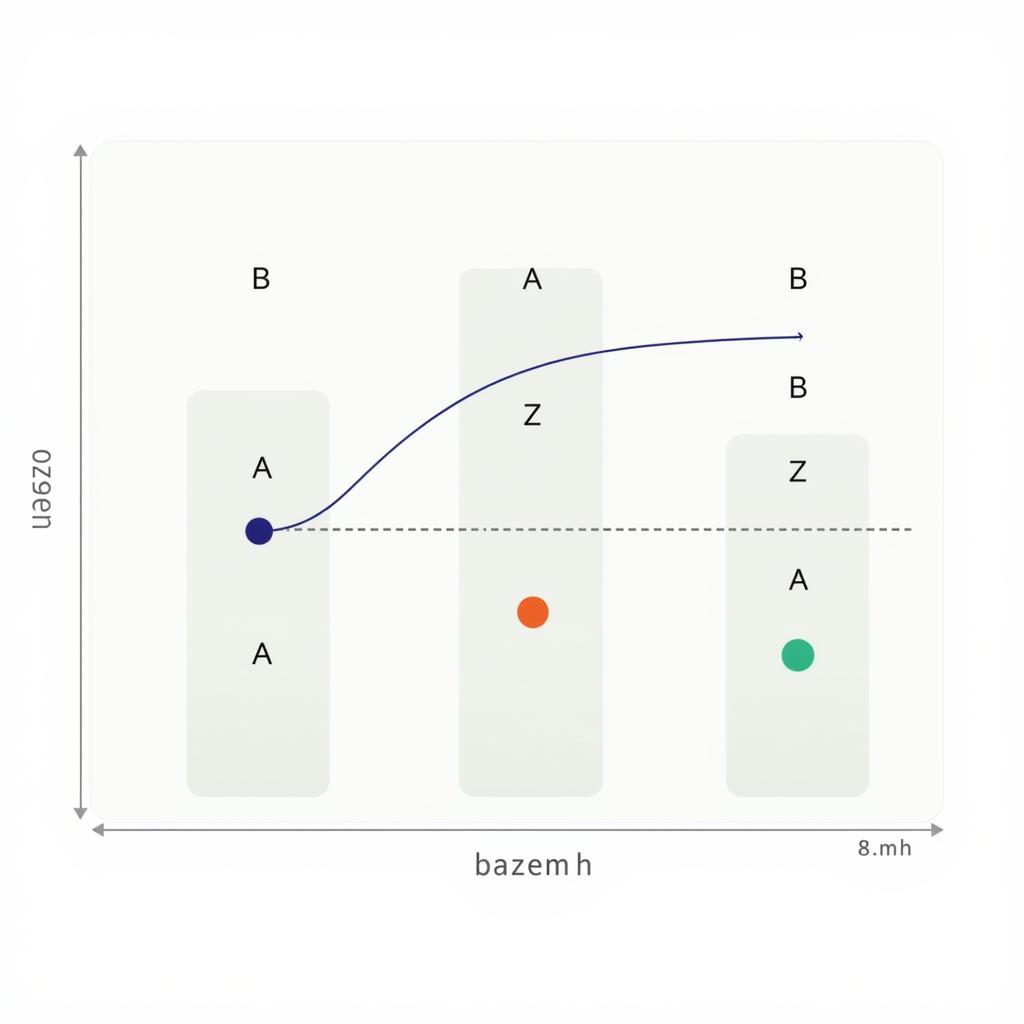Single System Research Design (SSRD) offers a powerful tool for evaluating interventions in various fields, from education and psychology to paranormal research. It allows researchers to rigorously examine the effects of a specific intervention on a single individual or system, providing valuable insights into cause-and-effect relationships. This approach is particularly relevant when exploring phenomena that are difficult to study in large groups, such as unique paranormal experiences or individualized treatments for anomalous abilities.
 Diagram illustrating A-B design in Single System Research Design
Diagram illustrating A-B design in Single System Research Design
What is Single System Research Design?
Single system research design involves systematically collecting data on a single unit – be it a person, a family, or even a specific location experiencing paranormal activity – over time. This allows for the assessment of changes in behavior or other variables before, during, and after an intervention. SSRDs are especially helpful when traditional group research designs aren’t feasible or appropriate. Think of it like a personalized experiment, tailored to the specific circumstances of the subject being studied. For example, in investigating a purportedly haunted house, SSRD could be used to track changes in electromagnetic field fluctuations after implementing a cleansing ritual.
This personalized approach can be invaluable in fields like paranormal investigation where each case is unique. While introduction to research in education might focus on large groups, SSRD offers a way to dive deep into individual paranormal events.
Types of Single System Research Designs
Several variations of SSRD exist, each with its own strengths and limitations:
- A-B Design: The most basic design involves a baseline phase (A) followed by an intervention phase (B).
- A-B-A Design: This design adds a second baseline phase after the intervention is withdrawn, strengthening causal inferences.
- A-B-A-B Design: This adds a second intervention phase, further demonstrating the impact of the intervention.
- Multiple Baseline Design: This design involves staggering the introduction of the intervention across different individuals, settings, or behaviors.
 Multiple Baseline Design Across Individuals in Single System Research
Multiple Baseline Design Across Individuals in Single System Research
Implementing Single System Research Design in Paranormal Research
Applying SSRD to paranormal investigations requires careful planning and execution. First, identify the specific phenomenon you want to study. Next, define measurable variables and establish a reliable data collection method. For example, in investigating poltergeist activity, the variable could be the frequency of objects being moved, measured through video surveillance. Then, implement the chosen intervention, whether it’s a spiritual cleansing, electromagnetic shielding, or another relevant action. Finally, analyze the data to assess the impact of the intervention.
Imagine using this approach to investigate a case of alleged psychic abilities. The user research repository could help inform the design of a study evaluating the accuracy of precognitive dreams using an A-B-A design.
Advantages and Disadvantages of SSRD
SSRD offers several advantages, including its flexibility, adaptability, and focus on individual differences. However, it also has limitations, such as potential threats to internal validity and the difficulty of generalizing findings to larger populations.
Why is Single System Research Design Important?
SSRD provides a framework for rigorous and systematic investigation, even when dealing with unique or rare phenomena. This is particularly crucial in paranormal research where skepticism is prevalent and scientific evidence is often lacking. By employing SSRD, researchers can strengthen the credibility of their findings and contribute to a better understanding of the unexplained.
This detailed, personalized approach can even be applied to seemingly unrelated fields like researching the effects of different guitar modifications. Though schecter guitar research demon 6 might focus on the physical aspects of a guitar, an SSRD could explore the impact of a modified pickup on a musician’s performance over time.
Conclusion
Single system research design provides a valuable tool for investigating a wide range of phenomena, including those within the realm of the paranormal. Its focus on individualized assessment and rigorous data collection offers a path towards a more scientific and nuanced understanding of the unexplained. By carefully planning and executing SSRDs, Paranormal Researchers can gather compelling evidence and contribute to a more informed discussion of these mysterious occurrences.
FAQs
- What is the difference between SSRD and case studies?
- How can I ensure the reliability of my data in SSRD?
- What are some common ethical considerations in SSRD?
- What statistical methods are used to analyze SSRD data?
- Can SSRD be used to study multiple individuals simultaneously?
- What are the limitations of using an A-B design?
- How can I choose the appropriate SSRD design for my research question?
You can also check out our article on introduction to educational research for broader insights into research methodologies. Or, if you’re curious about a different type of research, we have an article on amp research power step motor replacement that delves into a unique area of study.
For further assistance, please contact us at Phone: 0904826292, Email: research@gmail.com or visit us at No. 31, Alley 142/7, P. Phú Viên, Bồ Đề, Long Biên, Hà Nội, Việt Nam. We have a 24/7 customer support team.